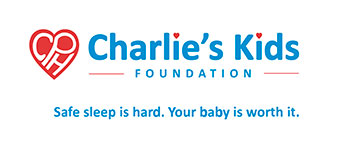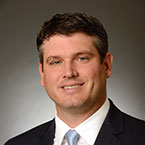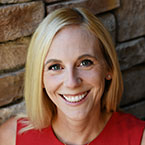By: Sam Hanke, MD, FAAP & Kate Desmond
Charlie was our first-born son. My wife Maura and I welcomed him into the world on April 6, 2010. We were filled with the most incredible joy—he was healthy and beautiful—absolutely perfect. We felt so blessed and we were so in love with this precious baby boy.
Like most parents, we wished for a long, joyful and happy life for our baby. We imagined his future, and we made plans. We found joy in the everyday—we read books with him, gave him baths, introduced him to family and friends.
But, our lives changed completely on the morning of April 28, 2010. Charlie died, a victim of an unsafe sleep environment. That night, I sat down on the couch with Charlie, to try and soothe him back to sleep. Imagine the perfect picture of sleep-deprived father and son. It wasn't unusual; we often see this photo on social media feeds—baby asleep on dad's chest, dad sound asleep too. But when I woke up, Charlie didn't.
More than a decade later, we continue to feel the pain from the impact of that night. Learn more about our story in the video below.
Following safe sleep practices, as outlined by the American Academy of Pediatrics, is vital to preventing sleep-related infant deaths. We know that, when practiced, the advice— placing an infant on their back, in their own crib, next to an adult bed - saves lives.
But preventing the tragedy of sleep-related infant death takes more than education, promoting the ABCs of safe sleep, and breastfeeding. Parents need to be motivated and supported by their community.
Ok, so what can I do?
Be vigilant. We know safe sleep is hard. We have walked in those new parent shoes, exhausted, tank on empty. And, we also know parents want to do
what is best for their baby. But, I'm here to tell you it takes just one sleep-deprived moment of fatigue to pull a baby into bed, couch, or armchair, and put that infant at risk. So, we need to talk more openly about parental exhaustion, what to do to stay awake, and how those in our community can help.
Creating a safe sleep plan
Mapping out a safe sleep plan is one place to start. Your plan should include:
- Where you will feed your baby.
- What activities you can do to stay awake.
- Who you can call for encouragement and relief.
Safe sleep is everyone's business
We all have a role to play in helping new parents be successful by recognizing the challenges that come with practicing safe sleep. From the pediatrician offering real practical tips on getting newborns to sleep, to the friend that can hold the baby so new parents can get a break, to the firefighter recognizing an unsafe sleep environment when on an ambulance run, to the child care provider making sure every crib in their facility is blanket and pillow free.
Providing solutions and support can empower parents to follow-through with their safe sleep plan. So parents, don't be afraid to ask for help. Friends, be encouraging and tell new parents they are doing a great job. Grandparents, be supportive and lend a hand when possible. And finally, all of us can lead with empathy and share real stories from those that have been impacted by sleep-related deaths.
Sharing my story
 We created
Charlie's Kids Foundation in 2011 as a way to provide resources for new parents about infant safe sleep so that other families would not have to suffer through a similar loss.
We created
Charlie's Kids Foundation in 2011 as a way to provide resources for new parents about infant safe sleep so that other families would not have to suffer through a similar loss.
In 2013, our board book,
Sleep Baby Safe and Snug, was created in an effort to share the American Academy of Pediatrics safe sleep recommendations in a way that was easy to understand and remember. Since that time, we have distributed millions of books across the country with the help of hospitals, community advocacy groups, and state health departments.
Through this book, we know Charlie is making a big difference and saving lives. But our work is not done. Too many babies continue to die in sleep environments, and this is a problem for all of us.
My hope is that you will share our story with the new parents in your life. Encourage them to practice safe sleep. Tell them when it feels especially hard, and they feel the exhaustion that comes with being a new parent to reach out, remember Charlie, and keep their baby safe.
More information
About Dr. Hanke
 Dr. Samuel Hanke is a Pediatric Cardiologist and an Assistant Professor in clinical pediatrics in the Heart Institute at Cincinnati Children’s Medical Center. He currently provides medical care to fragile infants and children with congenital and acquired heart disease in both acute care and outpatient environments. When not providing pediatric cardiac care, Dr. Hanke serves as President of Charlie’s Kids Foundation, an organization he and his wife founded after the untimely loss of their first son Charlie in 2010 to Sudden Infant Death Syndrome (SIDS) and an unsafe sleep environment. His organization has been committed to educating families about SIDS and Safe Sleep to help prevent other parents from suffering the sudden and unthinkable loss of an infant.
Dr. Samuel Hanke is a Pediatric Cardiologist and an Assistant Professor in clinical pediatrics in the Heart Institute at Cincinnati Children’s Medical Center. He currently provides medical care to fragile infants and children with congenital and acquired heart disease in both acute care and outpatient environments. When not providing pediatric cardiac care, Dr. Hanke serves as President of Charlie’s Kids Foundation, an organization he and his wife founded after the untimely loss of their first son Charlie in 2010 to Sudden Infant Death Syndrome (SIDS) and an unsafe sleep environment. His organization has been committed to educating families about SIDS and Safe Sleep to help prevent other parents from suffering the sudden and unthinkable loss of an infant.
About Kate Desmond
 As the Executive Director of Charlie's Kids Foundation, Kate Desmond is passionate about bringing the safe sleep message to parents and learning and sharing the stories that make this such a heart-wrenching and important topic. Kate is a Cincinnati, Ohio native, where she lives with her husband Bret and their two girls, Annaliese and Poppy.
As the Executive Director of Charlie's Kids Foundation, Kate Desmond is passionate about bringing the safe sleep message to parents and learning and sharing the stories that make this such a heart-wrenching and important topic. Kate is a Cincinnati, Ohio native, where she lives with her husband Bret and their two girls, Annaliese and Poppy.